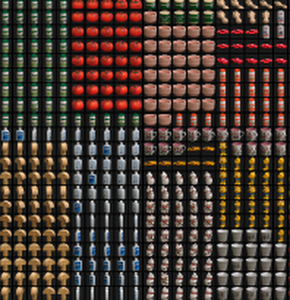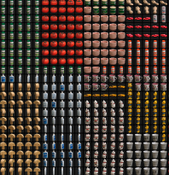Information
- Publication Type: Bachelor Thesis
- Workgroup(s)/Project(s):
- Date: November 2015
- Date (Start): 1. May 2015
- Date (End): 1. November 2015
- Matrikelnummer: 1126297
- First Supervisor: Eduard Gröller
Abstract
The aim of this bachelor thesis was to find different approaches to solve the following problem: A set of images is divided into different groups in a way that every image belongs to exactly one group. The user defines which image belongs to which group. The images should be positioned into a grid of a user-defined size, so that they can be recognised as clusters easily. To do so, it must be guaranteed, that every image has at least one neighbour image regarding the manhatten distance which belongs to the same group. Also there must not be any gaps, or clusters which split into several parts. Multiple algorithms which are able to solve this task are to be found and analysed. There are many approaches whose goal is to create an image summarisation out of a set of images. But these approaches place the images in a way that the groups are shaped by the algorithm itself. Yet there is no method published, which lets the user define the involved groups and their associated set of images. This thesis meets this requirements and offers different solutions for this task.Additional Files and Images
Weblinks
No further information available.BibTeX
@bachelorsthesis{krakhofer-2015,
title = "Automatic Summarization of Image Sets",
author = "Michael Krakhofer",
year = "2015",
abstract = "The aim of this bachelor thesis was to find different
approaches to solve the following problem: A set of images
is divided into different groups in a way that every image
belongs to exactly one group. The user defines which image
belongs to which group. The images should be positioned into
a grid of a user-defined size, so that they can be
recognised as clusters easily. To do so, it must be
guaranteed, that every image has at least one neighbour
image regarding the manhatten distance which belongs to the
same group. Also there must not be any gaps, or clusters
which split into several parts. Multiple algorithms which
are able to solve this task are to be found and analysed.
There are many approaches whose goal is to create an image
summarisation out of a set of images. But these approaches
place the images in a way that the groups are shaped by the
algorithm itself. Yet there is no method published, which
lets the user define the involved groups and their
associated set of images. This thesis meets this
requirements and offers different solutions for this task.",
month = nov,
address = "Favoritenstrasse 9-11/E193-02, A-1040 Vienna, Austria",
school = "Institute of Computer Graphics and Algorithms, Vienna
University of Technology ",
URL = "https://www.cg.tuwien.ac.at/research/publications/2015/krakhofer-2015/",
}



